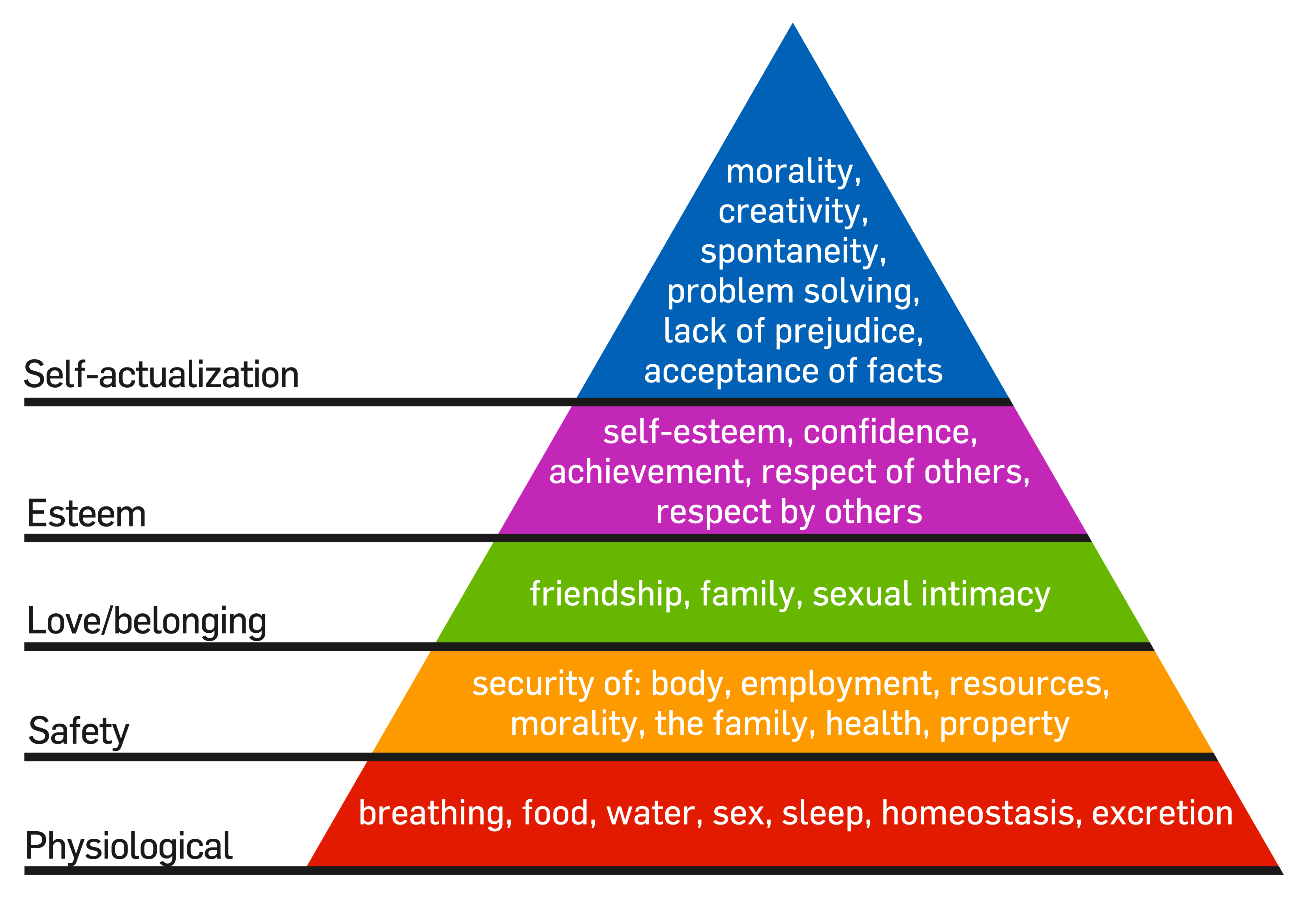In addition to recognition from others, there is a need for the person to develop self esteem and personal worth. Toward a psychology of being:
Maslow's Hierarchy of Needs Alternative Resources Directory
Maslow focused primarily on people from western societies not general human needs.

Maslow's hierarchy of needs theory. The hierarchy is often depicted as a pyramid to represent the need to fulfill the. Maslow subsequently extended the idea to include his observations of humans' innate curiosity. When you’re hungry, for instance, you look for and eat food, thus satisfying a basic.
It even suggests that people are motivated to fulfill their needs in a hierarchical order. Human needs are of varied and diversified nature. It helps to understand what people need and how the needs differs.
This hierarchy, also referred to as maslow’s theory of motivation includes five levels of human needs. Less immediate needs have to be met before more important needs can be satisfied. At its simplest, maslow’s hierarchy of needs theory proposes that human motivation is based on different levels of needs.
The urgency of these needs varies. This theory is based on the assumption that there is a hierarchy of five needs within each individual. A theory of human motivation:
Maslow ’s theory of motivation contends that people act to satisfy their unmet needs. His wants are growing continuously even when some wants are satisfied. Man is a wanting being, i.e.
We start to fulfill the most basic needs and move on to other advanced needs. Maslow’s hierarchy of needs is displayed like a pyramid with the most fundamental need at the bottom, while the highest on. This is the lowest and most basic level of maslow's hierarchy.
His theories parallel many other theories of human developmental psychology, some of which focus on d… Psychology, motivation and human needs. Maslow's hierarchy of needs by saul mcleod, published may 21, 2018.
These are the things that we simply cannot live without: The four above needs are literally the difference between living and dying. They can be arranged in a hierarchy of importance progressing from a lower to a higher order of.
In 1954, maslow’s theory was fully explained in his book motivation and personality. Within each level are specific needs that allow for an individual to feel fulfilled. The most basic level of maslow’s hierarchy of needs covers physiological needs.
Maslow’s hierarchy of needs is relevant to organizational theory due to the fact that the theory is concerned with human motivation. Assumptions in hierarchy of needs theory maslow's assumptions in hierarchy of needs theory are; Maslow’s hierarchy of needs is a motivational theory in psychology.
This slightly clunky phrase simply means that humans want to feel that they are fulfilling their potential and making the most of their abilities. According to maslow’s hierarchy of needs, motivation is the consequence of a person’s attempt to satisfy five fundamental needs: Needs lower down in the hierarchy must be satisfied before individuals can attend to needs higher up.
It is an important part of effective management; Mulwa (2008) states that abraham maslow’s hierarchy of needs is built on the premise that human behaviour is motivated by the desire to meet specific human needs in the society. Starting at the bottom of the pyramid (figure 1.
At this end of the hierarchy, all the needs are ‘deficiency needs’. The theory became very popular in many areas of subjects like science, management, sociology research, and psychology. This is the final level of the theory of hierarchy of needs as proposed by maslow.
The need for recognition and acceptance arises when a person has fulfilled their need for love and belongingness. This theory is a classical depiction of human motivation. The hierarchy of needs theory of abraham maslow (1962) has had a considerable impact on classroom management and teaching.
Abraham maslow is well renowned for proposing the hierarchy of needs theory in 1943. Needs are mentally prioritized in order of importance (maslow, 1943). If you didn’t do these things, you would die.
Maslow’s classic publication — perhaps essential reading for psychology students, educators and professionals.; The theory of abraham maslow’s hierarchy of needs considers certain human needs as more basic and critical needs than some other Air, food, drink, warmth, sleep and shelter.
Additional resources and references resources. Maslow (1970a) takes a comprehensive perspective to education and learning , rather than restricting behaviour to a reaction to one’s surroundings. According to maslow, these requirements can produce psychological forces that impact a person’s conduct.
Maslow's hierarchy of needs is an idea in psychology proposed by american abraham maslow in his 1943 paper a theory of human motivation in the journal psychological review.

Who are pet parents? What is the 'Pets as Kids Revoultion'?

Maslow's Hierarchy Of Needs Maslow Theory Of Human Motivation
/4136760-article-what-is-maslows-hierarchy-of-needs-5a97179aeb97de003668392e.png)
The 5 Levels of Maslow's Hierarchy of Needs

My Life Being Mental Maslow's Hierarchy of Needs

Maslow's Hierarchy Of Needs A Theory Of Human Motivation Pyramid, PNG